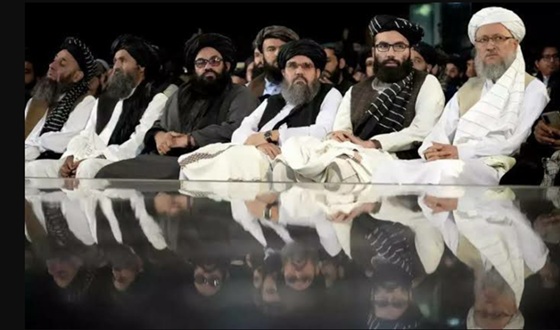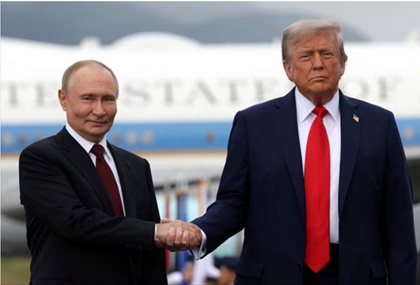Since seizing control of Afghanistan in August 2021, the Taliban has grappled with an economic crisis that threatens not only the nation’s stability but also the cohesion of its leadership. The collapse of foreign aid, frozen national reserves, and a controversial opium ban have plunged Afghanistan into economic turmoil, exacerbating longstanding divisions among Taliban leaders. These internal rifts, driven by ideological clashes, regional rivalries, and competing economic interests, could reshape the regime’s future and Afghanistan’s precarious place in the region.
A Nation in Economic Freefall
Afghanistan’s economy has been in dire straits since the Taliban’s return to power. The abrupt halt of $8 billion in annual foreign aid—previously accounting for 40% of GDP—and the freezing of $9 billion in foreign reserves have triggered a 20% GDP contraction. Sanctions, declining humanitarian aid (from $3 billion in 2022 to $2 billion in 2023), and restrictive policies like the ban on women’s education and employment have deepened poverty, with most Afghans unable to meet basic needs. The Taliban’s 2022 opium ban, while ideologically motivated, wiped out $1 billion in rural income and over 700,000 jobs, further fueling economic distress.
Despite some successes—stabilizing the exchange rate, curbing inflation, and boosting revenue through taxation and reduced corruption—the Taliban’s economic management remains fragile. The regime’s reliance on mining and limited foreign partnerships, coupled with minimal investment in social services, has left Afghanistan teetering on the edge of a humanitarian catastrophe.
Fractures Within the Taliban
The economic crisis has exposed deep divisions within the Taliban’s leadership, a coalition of factions united in war but increasingly fractured in governance. At the center is Supreme Leader Haibatullah Akhundzada, whose hardline vision of Islamic rule, enforced from Kandahar, prioritizes ideological purity over pragmatic solutions. His Propagation of Virtue and Prevention of Vice Law and the opium ban reflect this stance, but they have alienated key figures like Interior Minister Sirajuddin Haqqani and Defense Minister Mullah Mohammad Yaqoob.
Akhundzada’s consolidation of power, favoring loyalists from southern Pashtun strongholds like Kandahar and Helmand, has marginalized non-Pashtun and northern factions. His restructuring of the Rahbari Shura in May 2023, appointing allies like Khairullah Khairkhwa, sidelined influential players like Haqqani, whose network reportedly profits from the heroin trade. This economic disparity, particularly over the opium ban’s fallout, has fueled tensions, as rural communities and some factions bear the brunt of lost income.
Ideological divides further complicate matters. Pragmatic leaders advocate for engaging with the West to unlock aid and legitimacy, but Akhundzada’s distrust of foreign influence stifles these efforts. The ban on women’s participation in public life, for instance, has deterred donors, prolonging economic isolation. Meanwhile, competition over mining revenues and taxation has intensified, with figures like Haji Bashir Noorzai dominating resource control, creating further friction.
Why It Matters
The growing schisms within the Taliban have profound implications. Internally, the regime’s stability is at risk. While Akhundzada’s grip on the military reduces the immediate threat of an uprising, the exclusion of powerful factions like the Haqqani network could spark covert resistance or even a splintering of the Taliban. Economic mismanagement, particularly the lack of alternatives to the opium economy, risks alienating rural communities, potentially fueling unrest.
Regionally, these tensions affect Afghanistan’s neighbors. Pakistan, frustrated by the Taliban’s failure to curb the Tehrik-e-Taliban Pakistan (TTP), faces security challenges, while Central Asian states worry about spillover instability. The Taliban’s economic dependence on China and Russia, coupled with internal disagreements over foreign engagement, could shift regional power dynamics, especially if pragmatic factions gain influence.
Globally, the Taliban’s internal struggles complicate international efforts to address Afghanistan’s humanitarian crisis. Western sanctions and frozen reserves, while aimed at pressuring the regime, have primarily harmed civilians, raising questions about their efficacy. The lack of a unified international approach—some nations engage pragmatically, others demand reforms—further isolates Afghanistan, emboldening Akhundzada’s hardline stance.
Recent Developments and Future Outlook
Recent moves, like a reported $10 billion energy deal with Azizi Energy in 2025 to generate 10,000 megawatts, signal attempts to bolster the economy. However, without broader reforms, such investments may enrich loyalist factions, deepening internal divides. The end of U.S. emergency aid in April 2025 and reduced NGO funding have intensified economic pressures, particularly for women reliant on aid-related jobs. Regional tensions, including Pakistan’s concerns over a strong Afghan government, further complicate recovery efforts.
Looking ahead, the Taliban’s ability to navigate its economic crisis hinges on resolving internal rifts. A shift toward pragmatic governance—easing restrictions on women and engaging with global partners—could unlock aid and stabilize the economy. However, Akhundzada’s dominance makes this unlikely in the near term. If economic conditions worsen, the risk of factional splits or localized unrest grows, potentially destabilizing Afghanistan and the region.
A Critical Perspective
While some praise the Taliban’s economic stabilization efforts, such as improved revenue collection, these measures prioritize regime survival over public welfare. Policies like the opium ban and women’s restrictions, though ideologically driven, undermine long-term recovery by alienating communities and donors. The international community faces a dilemma: continued isolation risks pushing Afghanistan toward collapse, while engagement without reform empowers hardliners. Targeted aid bypassing the regime and support for pragmatic factions could offer a path forward, but success requires navigating the Taliban’s complex internal dynamics.
In a nation where economic survival hangs by a thread, the Taliban’s leadership must confront its own divisions or risk fracturing the fragile regime it fought to build.
Discover more from Defence Talks | Defense News Hub, Military Updates, Security Insights
Subscribe to get the latest posts sent to your email.





